Filipino desserts are a delightful part of the country’s rich culinary heritage. These sweet treats blend local ingredients with unique flavors to create memorable taste experiences. You’ll find a wide variety of desserts in the Philippines, from simple rice cakes to elaborate icy concoctions.
Many Filipino desserts use coconut, rice, and tropical fruits as key ingredients. These sweets often combine textures and tastes in creative ways, offering something for every palate. Whether you’re looking for a quick snack or a special after-dinner treat, Filipino desserts have you covered. Get ready to explore some of the most beloved sweet creations from this vibrant Southeast Asian cuisine.
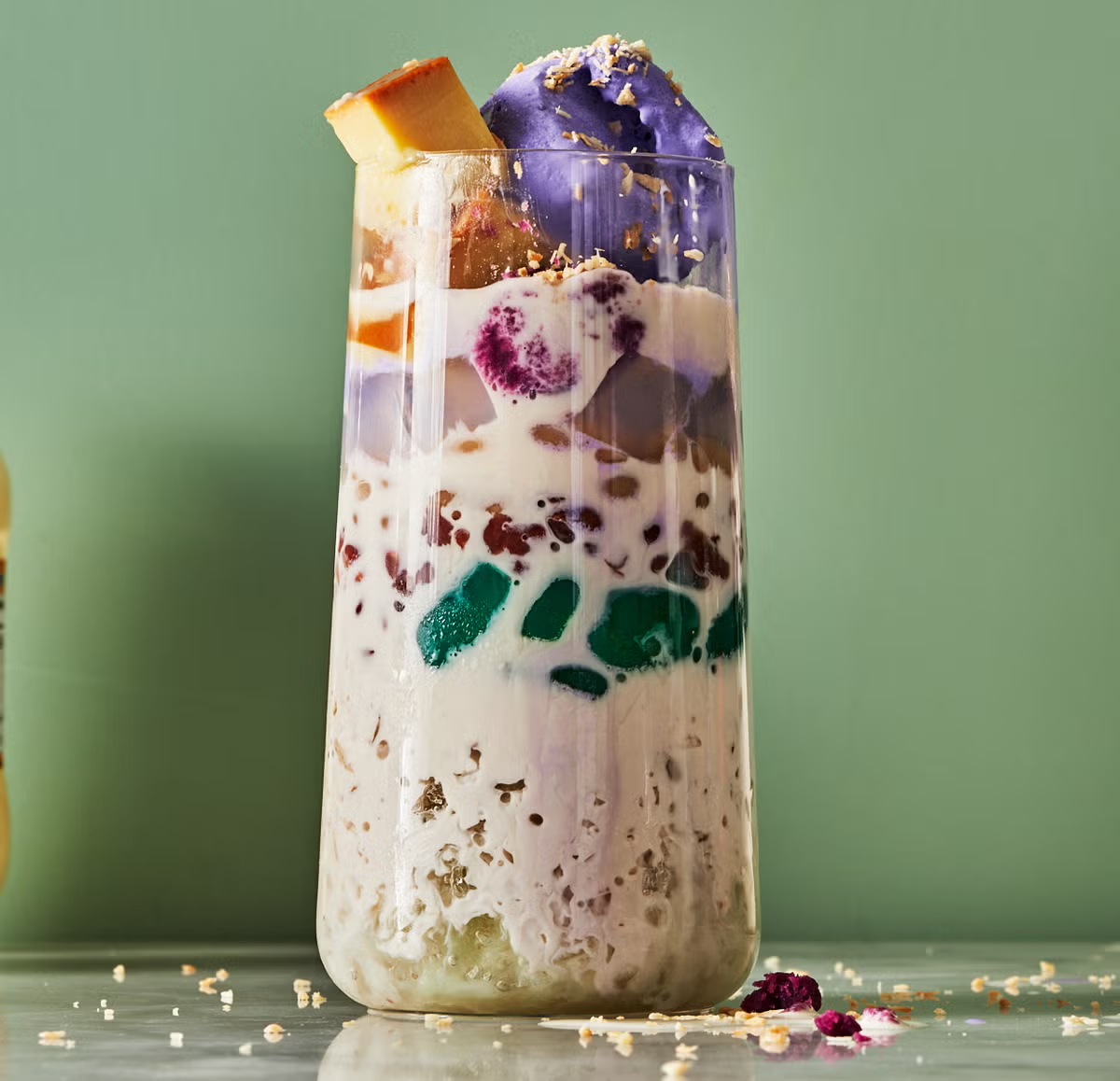
1. Halo-Halo
Halo-Halo is a beloved Filipino shaved ice dessert. You’ll find it’s a colorful mix of ingredients layered in a tall glass.
The base often includes sweet beans, coconut gel, and fruit. Shaved ice is then piled on top. You’ll see it drizzled with evaporated milk for creaminess.
Toppings make Halo-Halo special. You might find ube ice cream, leche flan, or pinipig (toasted rice flakes) on top. Some versions include jackfruit or sweetened bananas.
To eat Halo-Halo, you mix everything together. The name actually means “mix-mix” in Tagalog. It’s a refreshing treat perfect for hot days.
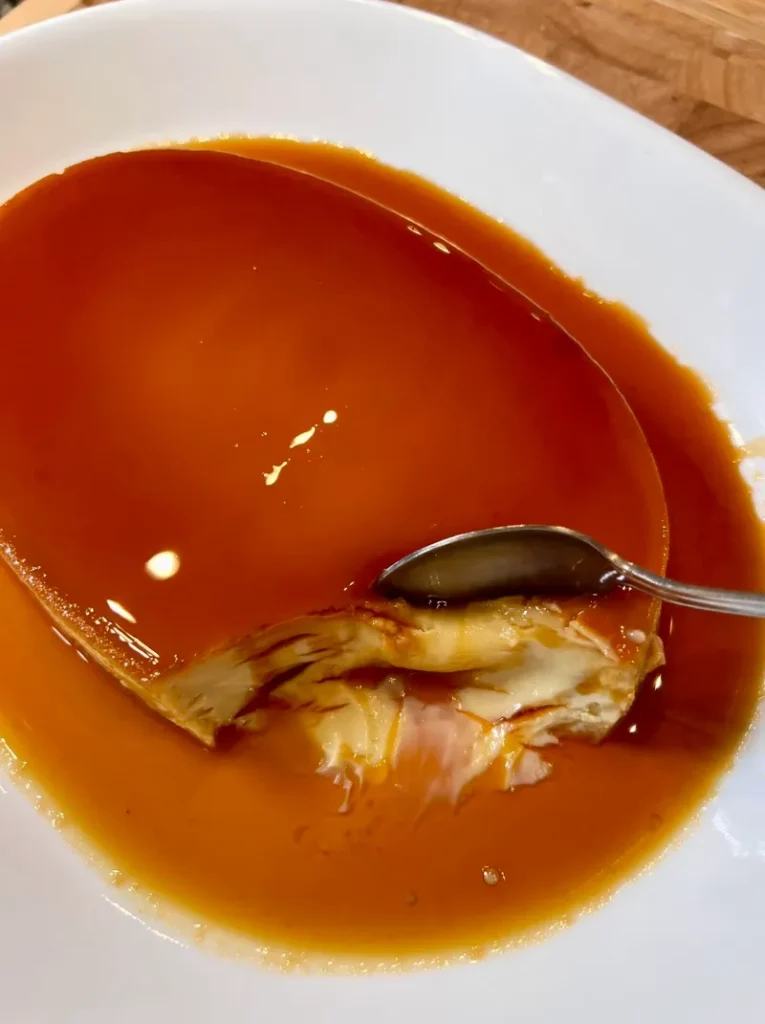
2. Leche Flan
Leche flan is a beloved Filipino dessert that will satisfy your sweet tooth. This creamy custard is made with egg yolks, milk, and sugar. It’s topped with a layer of caramel sauce that adds a rich flavor.
To make leche flan, you’ll need a special mold called a llanera. You’ll melt sugar in the mold to create the caramel layer. Then pour in the custard mixture and steam or bake it until set.
When done, the flan should be smooth and jiggly. You can serve it chilled for a refreshing treat. Leche flan is perfect for special occasions or as an everyday indulgence.
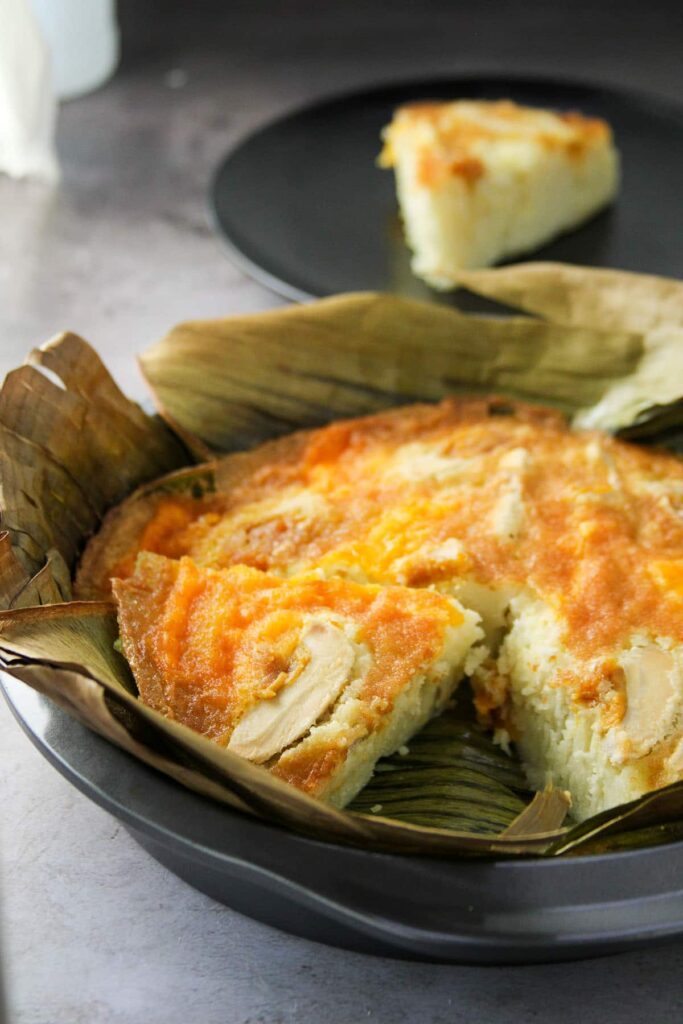
3. Bibingka
Bibingka is a popular Filipino rice cake that’s often enjoyed during Christmas. You’ll find it’s made with rice flour and coconut milk, giving it a soft, fluffy texture.
Traditionally, bibingka is baked in banana leaves, which adds a unique aroma. Some versions include salted eggs or cheese for extra flavor.
You can spot bibingka being cooked in clay pots over charcoal in the Philippines. This method creates a crispy bottom and edges.
At home, you can bake bibingka in a regular oven using a cast-iron skillet. It’s usually served warm and topped with grated coconut or butter.
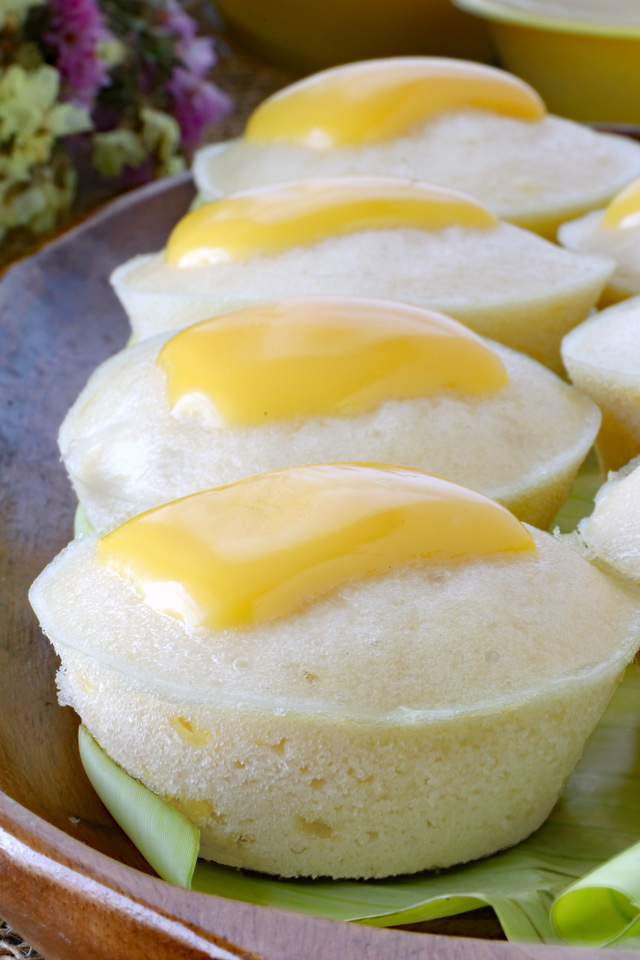
4. Puto
Puto is a beloved Filipino steamed rice cake. You’ll find these soft, fluffy treats at many celebrations and gatherings.
To make puto, you mix rice flour, sugar, baking powder, and coconut milk. Some recipes add yeast for extra lift. The batter is poured into small molds and steamed until cooked through.
Puto comes in different flavors and colors. The classic white puto is often topped with cheese or salted egg. You can also find purple ube puto or pandan-flavored green versions.
These little cakes have a slightly sweet taste and spongy texture. They pair well with savory Filipino dishes or can be enjoyed on their own as a snack.
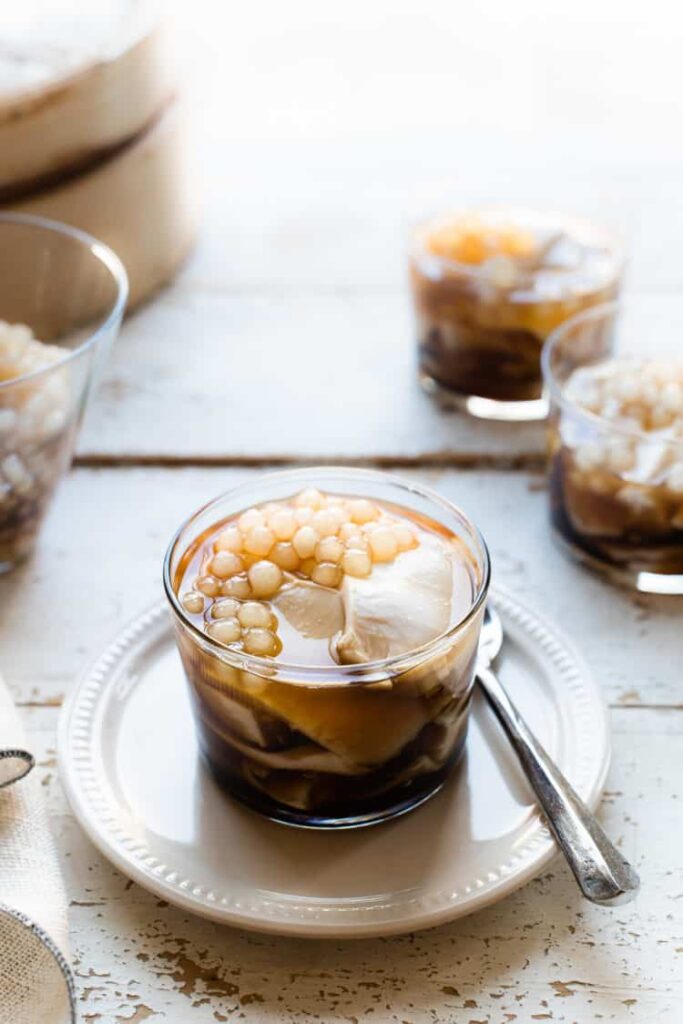
5. Taho
Taho is a beloved Filipino street food dessert. You’ll love this warm, comforting treat made with silken tofu, sweet syrup, and chewy tapioca pearls.
To make taho, steam silken tofu until it’s heated through. You can also microwave it for a quick option. The syrup, called arnibal, is made by simmering sugar and water.
Cook the tapioca pearls separately until they’re soft and chewy. To serve, layer the warm tofu, tapioca pearls, and sweet syrup in a cup or bowl.
Taho is best enjoyed fresh and warm. You can find it sold by street vendors in the Philippines, or try making it at home for a taste of Filipino comfort food.
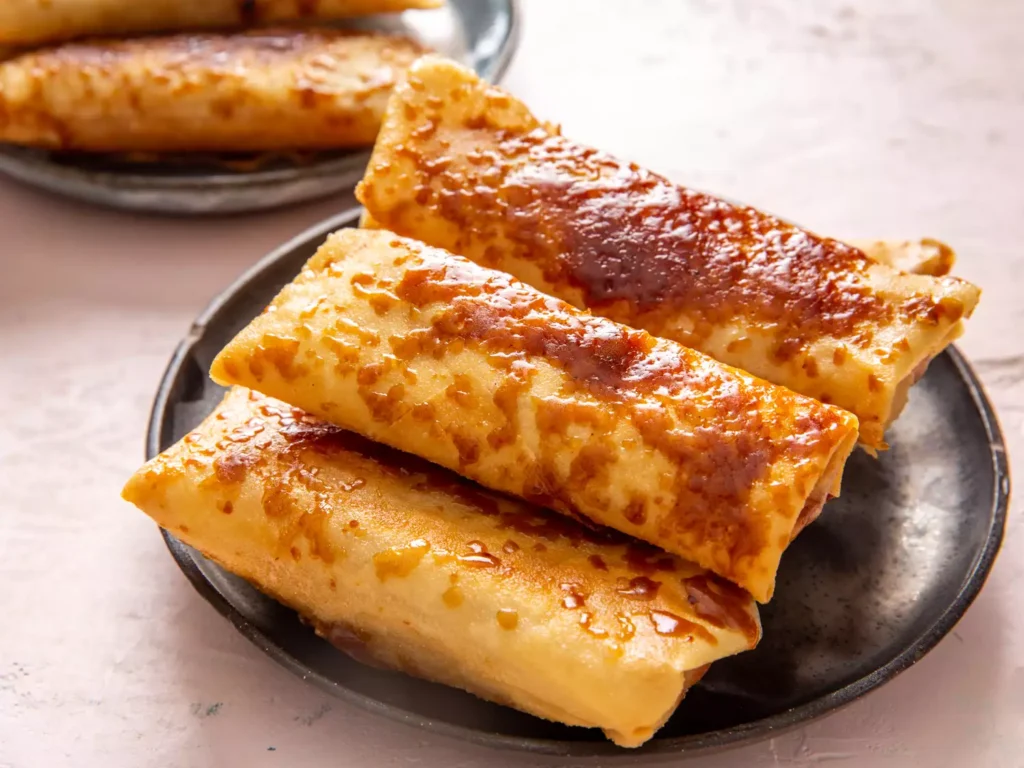
6. Turon
Turon is a beloved Filipino dessert that combines sweet bananas and crispy wrapper. To make it, you’ll need ripe plantains or bananas, spring roll wrappers, and brown sugar.
Start by slicing the bananas lengthwise. Roll each piece in brown sugar, then wrap it tightly in a spring roll wrapper. Seal the edges with water.
Fry the wrapped bananas in hot oil until golden brown and crispy. Some recipes add a caramel coating by melting sugar in the oil before frying.
For a healthier version, you can bake turon in the oven. Brush with melted butter and bake at 425°F for 10-15 minutes.
Serve turon hot as a snack or dessert. It’s crispy on the outside and gooey-sweet on the inside.
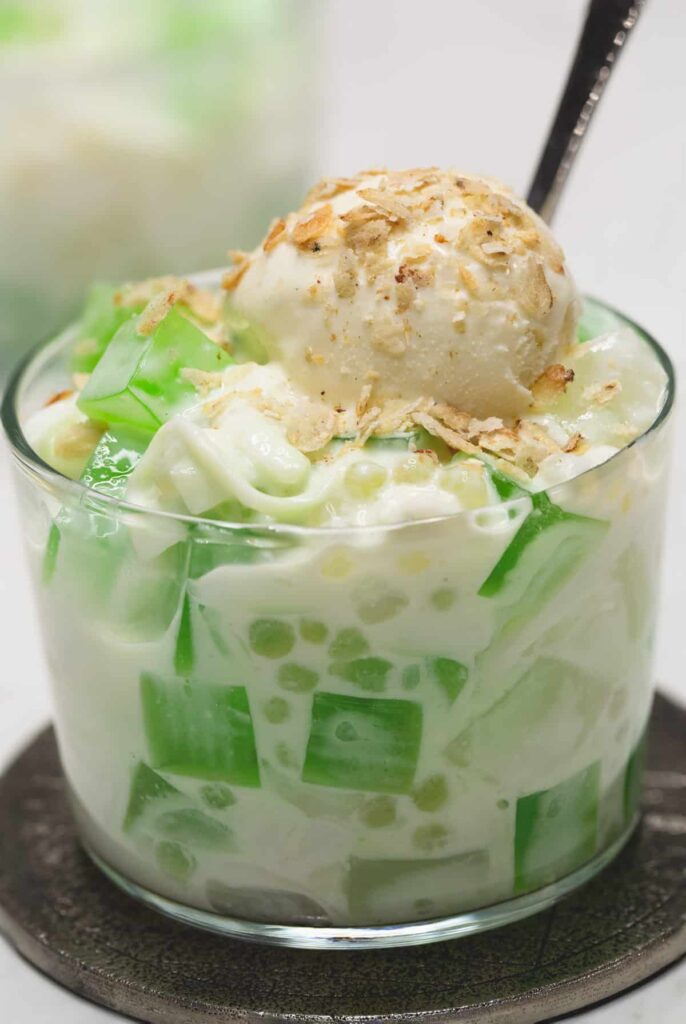
7. Buko Pandan
Buko Pandan is a sweet and refreshing Filipino dessert. It combines young coconut, pandan-flavored jelly, and a creamy mixture.
To make it, you’ll need coconut meat, pandan jelly, and a blend of cream and sweetened condensed milk. Some recipes add nata de coco or sago pearls for extra texture.
You can make the jelly by boiling pandan leaves in water and adding gelatin. Once set, cut it into small cubes.
Mix the coconut meat, jelly cubes, and creamy mixture in a bowl. Chill it in the fridge before serving.
For a special touch, top your Buko Pandan with a scoop of vanilla ice cream. This cool treat is perfect for hot days.
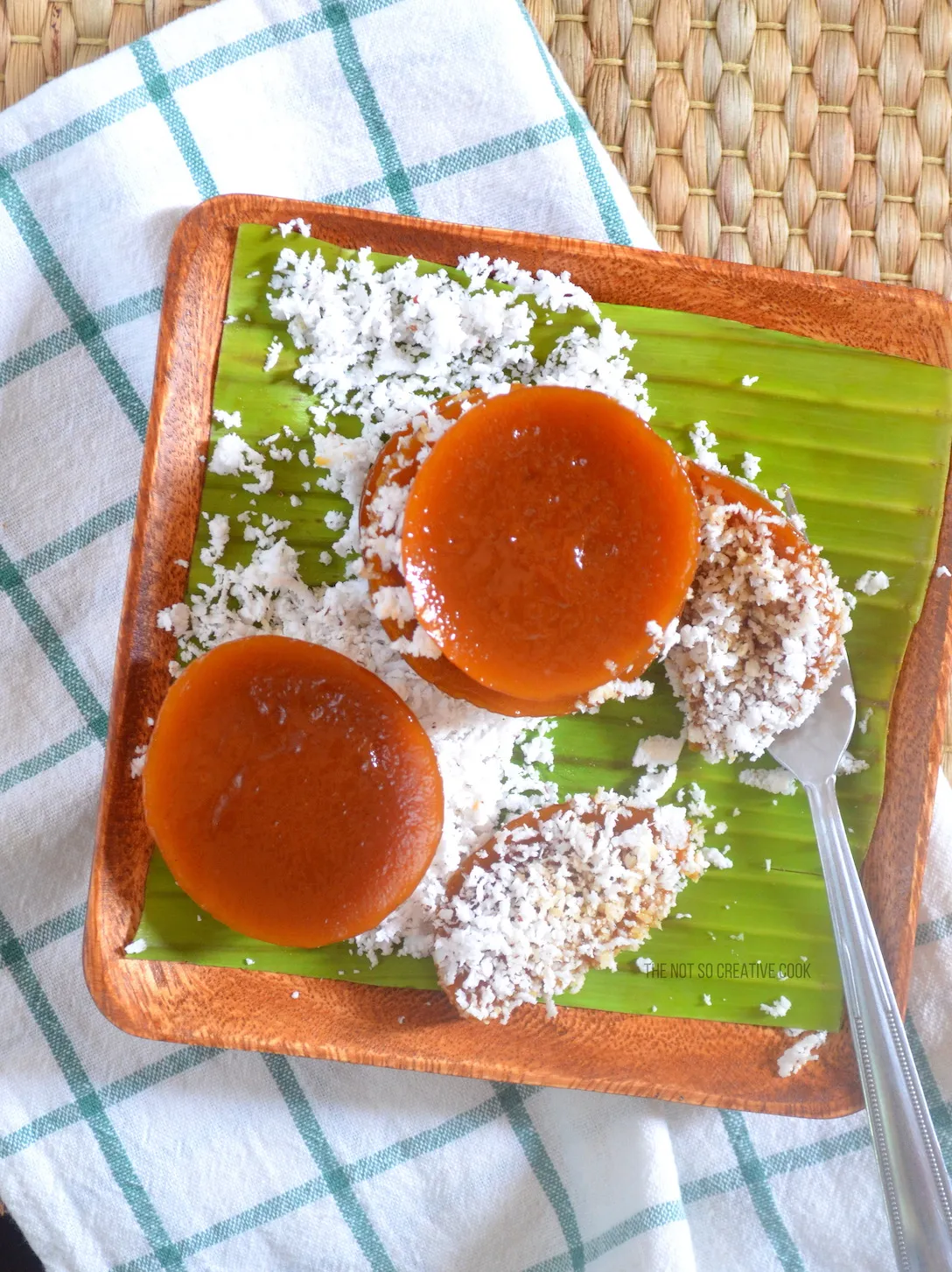
8. Kutsinta
Kutsinta is a chewy, jelly-like Filipino dessert. It’s made from rice flour, brown sugar, and lye water. The batter is poured into small molds and steamed until firm.
You’ll recognize kutsinta by its distinct orange-brown color. This comes from adding annatto seeds or powder to the mixture. The dessert has a slightly sweet taste and springy texture.
To serve, kutsinta is often topped with grated coconut. This adds a nice contrast to the soft, sticky cake. You can find kutsinta at many Filipino markets and restaurants.
Making kutsinta at home is possible too. You’ll need to mix the ingredients, pour the batter into molds, and steam for about 40 minutes. The result is a tasty treat that’s popular for snacks or dessert.
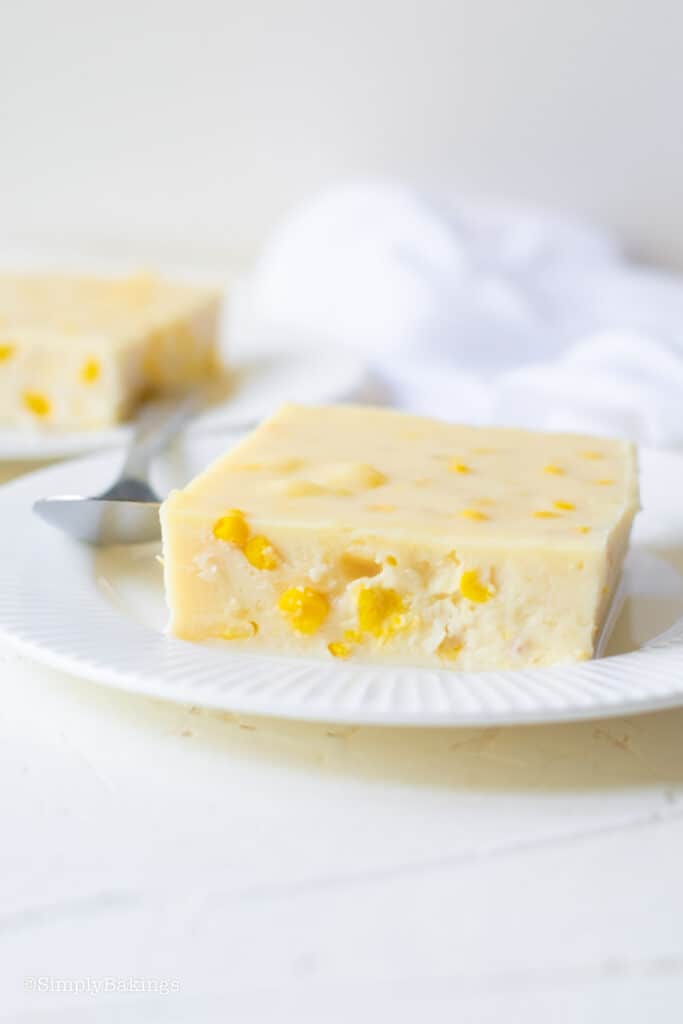
9. Maja Blanca
Maja blanca is a creamy Filipino dessert you’ll love. It’s made with coconut milk, condensed milk, and cornstarch.
You cook these ingredients together until thick. Then pour the mixture into a pan to set. Some recipes add sweet corn kernels for extra flavor and texture.
Once firm, you can top it with toasted coconut flakes or shredded cheese. Cut it into squares before serving.
Maja blanca is perfect for special occasions like Christmas and fiestas. You can make it ahead of time and keep it in the fridge until ready to eat.
This dessert is smooth, sweet, and refreshing. It’s a popular treat that’s sure to please your family and friends.
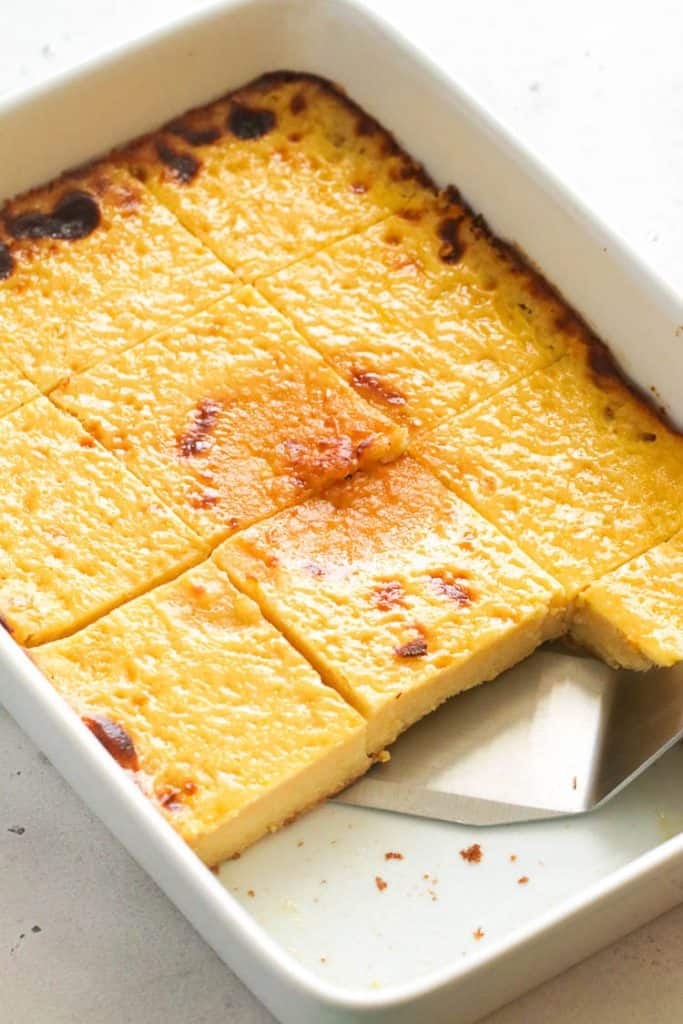
10. Cassava Cake
Cassava cake is a beloved Filipino dessert made from grated cassava root. You’ll love its soft, chewy texture and sweet flavor.
This treat combines cassava with coconut milk, condensed milk, and eggs. The mixture is baked until set, creating a moist and satisfying cake.
Many versions include a creamy custard topping for extra indulgence. Some recipes add macapuno (coconut sport) or cheese for more flavor and texture.
You’ll often find cassava cake at special events like fiestas and holidays. It’s also a popular everyday snack or dessert in Filipino homes.
Try making this easy dessert yourself for a taste of Filipino cuisine. Its simple ingredients come together to create a truly delicious treat.
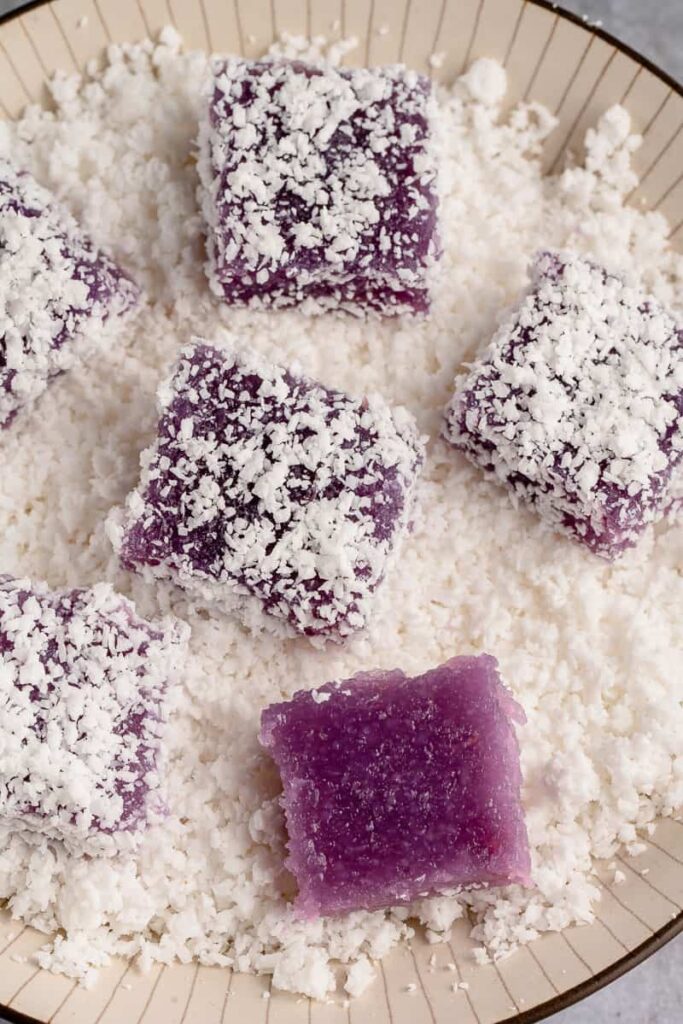
11. Pichi-Pichi
Pichi-pichi is a sweet Filipino treat you’ll love. It’s made from grated cassava, coconut juice, and sugar. The mixture is steamed until it becomes soft and chewy.
Once cooked, pichi-pichi is rolled in grated coconut or cheese. This adds extra flavor and texture to the dessert.
You can enjoy pichi-pichi as a snack or dessert. It’s often served at parties and gatherings. The recipe is simple, using just a few ingredients.
Try making pichi-pichi at home for a taste of Filipino cuisine. Its unique texture and coconut flavor make it a standout treat.
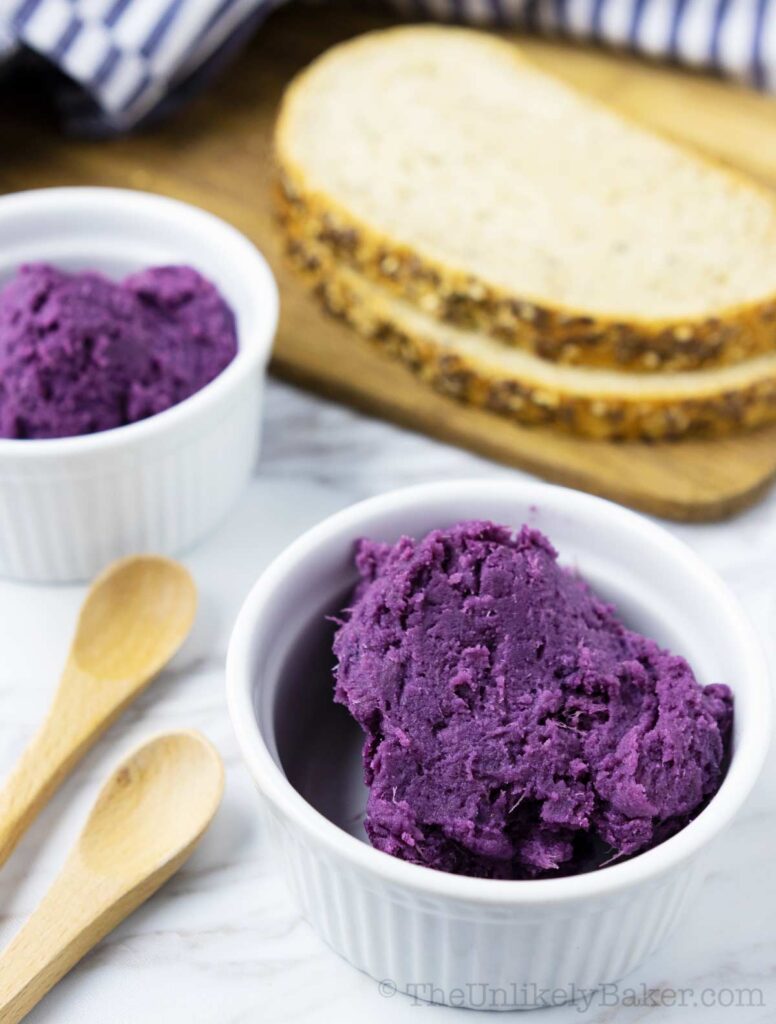
12. Ube Halaya
Ube halaya is a beloved Filipino dessert made from purple yam. You’ll love its vibrant purple color and creamy texture.
To make ube halaya, you cook mashed purple yam with milk, butter, and sugar. The result is a smooth, spreadable jam-like treat.
You can enjoy ube halaya on its own as a dessert. It’s also great as a topping for halo-halo or as a filling for pastries and breads.
This versatile dessert is popular during Christmas and New Year celebrations in the Philippines. Its rich, sweet flavor and eye-catching appearance make it a festive favorite.
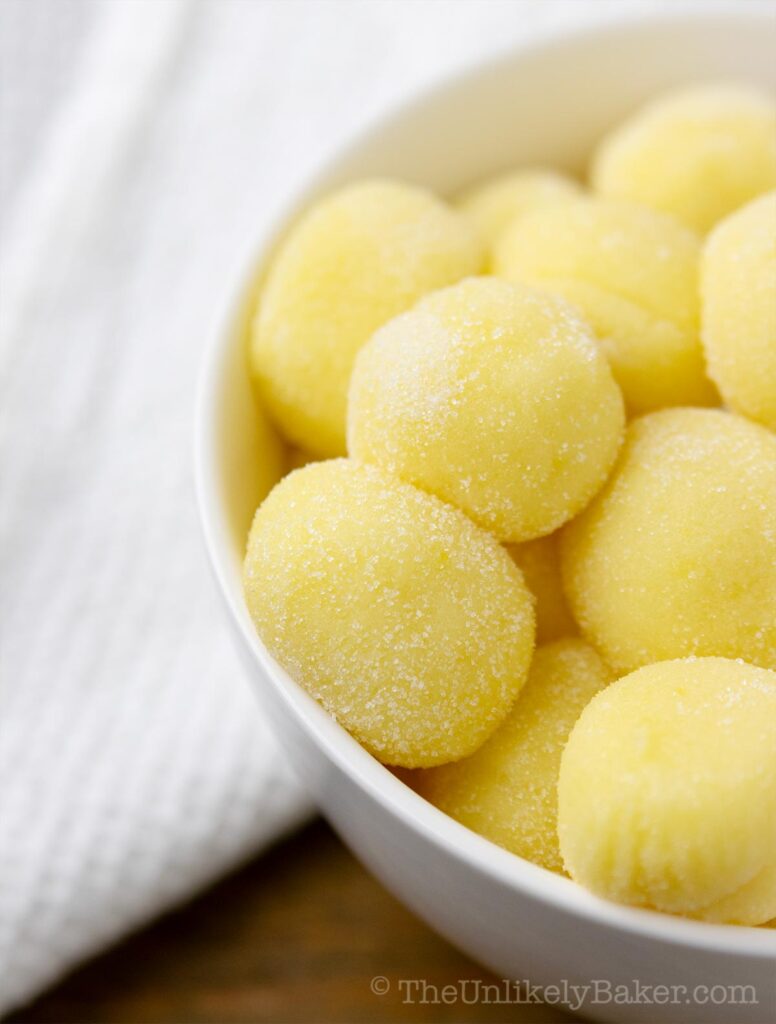
13. Yema
Yema is a beloved Filipino candy treat. It’s made from egg yolks and condensed milk, cooked until thick and creamy. The mixture is then formed into small balls or pyramids.
You can make yema at home easily. Mix egg yolks and condensed milk in a pan. Cook over low heat, stirring constantly. Keep cooking until it thickens to a paste-like consistency.
Some recipes add chopped nuts for extra flavor and crunch. You can also try different shapes or use it as a spread on bread. Yema is often wrapped in colorful cellophane for a festive touch.
This sweet treat is popular at parties and celebrations. It’s a tasty way to enjoy a classic Filipino dessert.
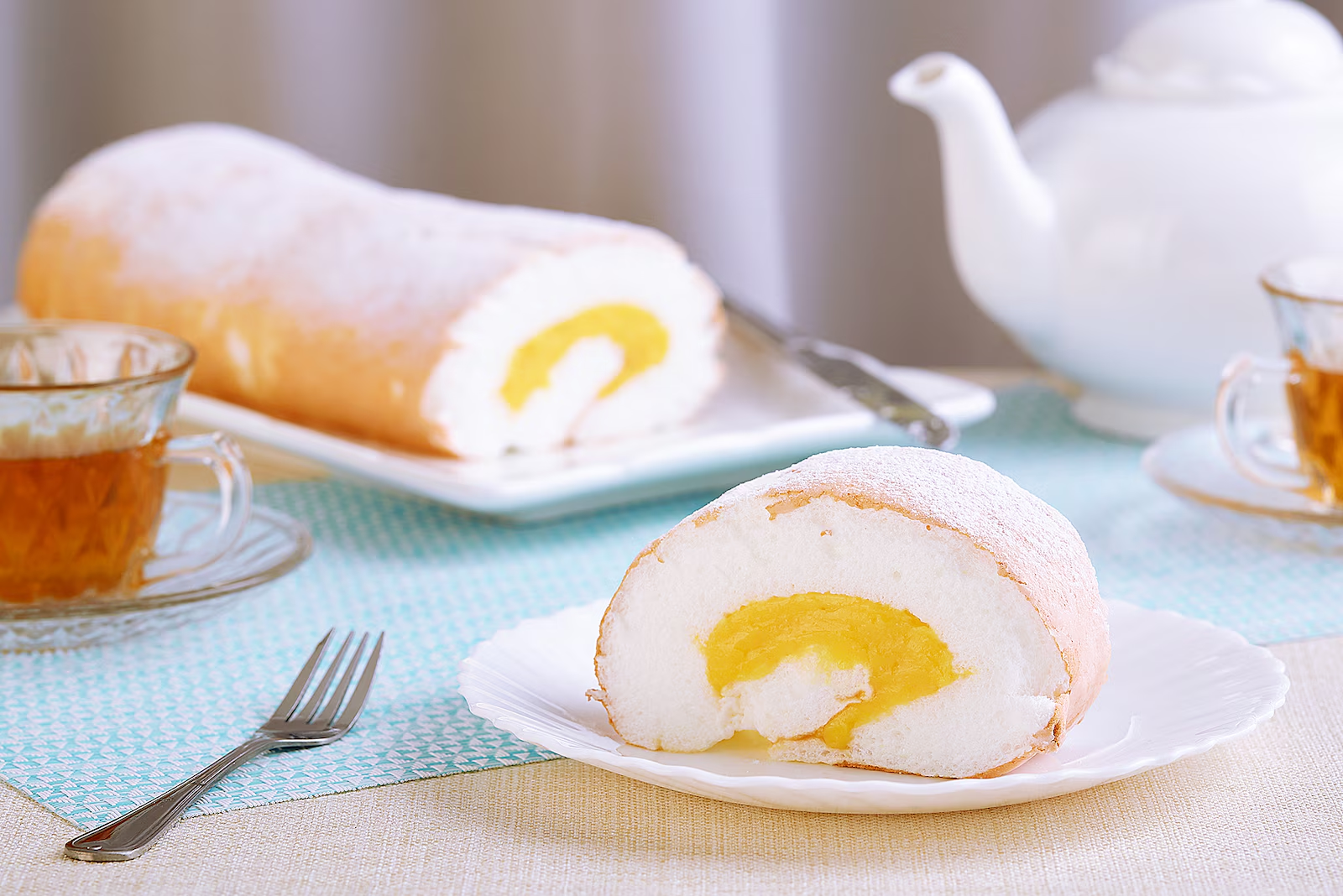
14. Brazo de Mercedes
Brazo de Mercedes is a beloved Filipino dessert that will satisfy your sweet tooth. This roll cake features a soft, fluffy meringue exterior wrapped around a rich, creamy custard filling.
To make it, you’ll whip egg whites with sugar until stiff peaks form. Spread this meringue on a baking sheet and bake until lightly browned.
For the filling, mix egg yolks, milk, and sugar. Cook this mixture until it thickens into a spreadable custard. Once cooled, spread the custard on the meringue and roll it up.
The result is a delightful contrast of textures and flavors. The meringue is light and airy, while the custard is smooth and indulgent. It’s a perfect dessert for special occasions or anytime you crave something sweet.
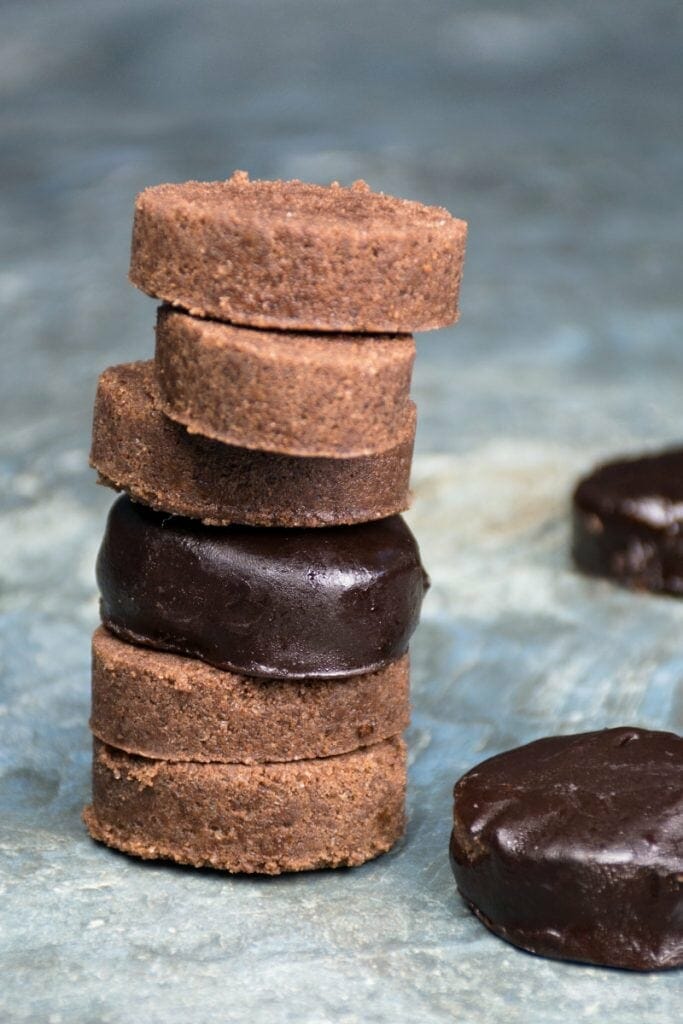
15. Polvoron
Polvoron is a beloved Filipino shortbread treat that melts in your mouth. You’ll find it made with toasted flour, powdered milk, sugar, and butter. The ingredients are mixed together and pressed into small, round molds.
These sweet, crumbly cookies have a rich, buttery flavor. You can enjoy them as a snack or dessert. Polvoron comes in many flavors like chocolate, ube, or pinipig (toasted rice).
You’ll often see polvoron wrapped in colorful cellophane. It’s a popular gift during holidays and special occasions. You can easily make polvoron at home or find them in Filipino bakeries and stores.
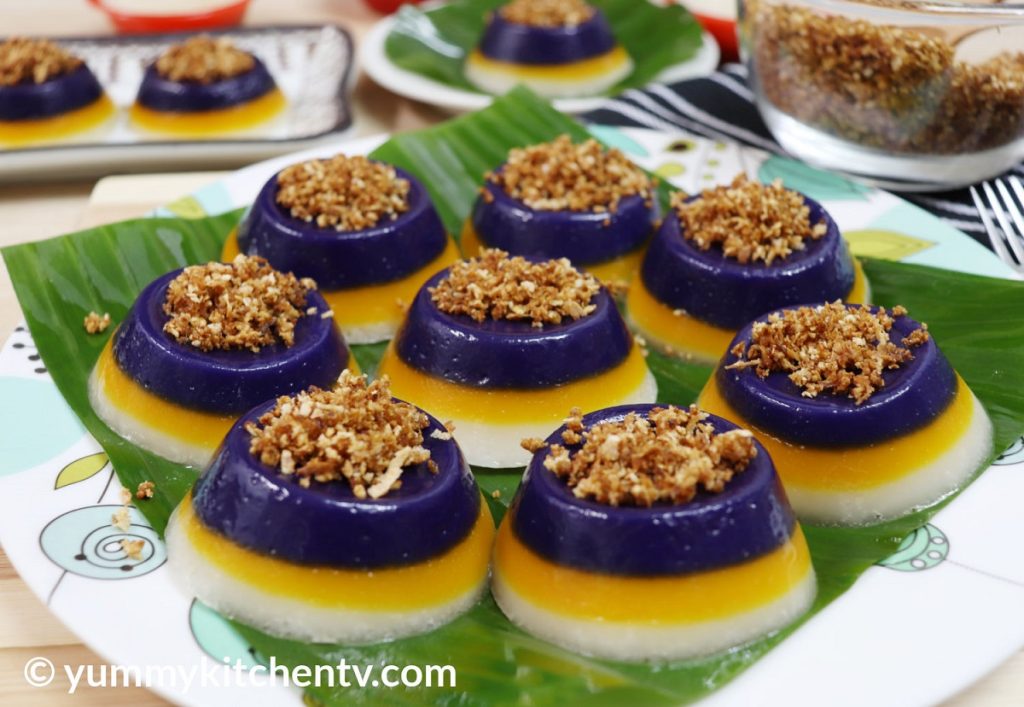
16. Sapin-Sapin
Sapin-Sapin is a colorful Filipino rice cake dessert. It has layers of different colors and flavors stacked on top of each other.
The main ingredients are glutinous rice flour, coconut milk, and sugar. Each layer gets its own unique flavor and color.
Common flavors include ube (purple yam), jackfruit, and plain coconut. Food coloring adds vibrant hues to each layer.
You steam Sapin-Sapin in a pan, cooking each layer separately. Once cooled, you flip it onto a plate to serve.
The dessert has a chewy, sticky texture. Its name means “layer-layer” in Filipino. You can find Sapin-Sapin at special occasions and Filipino bakeries.
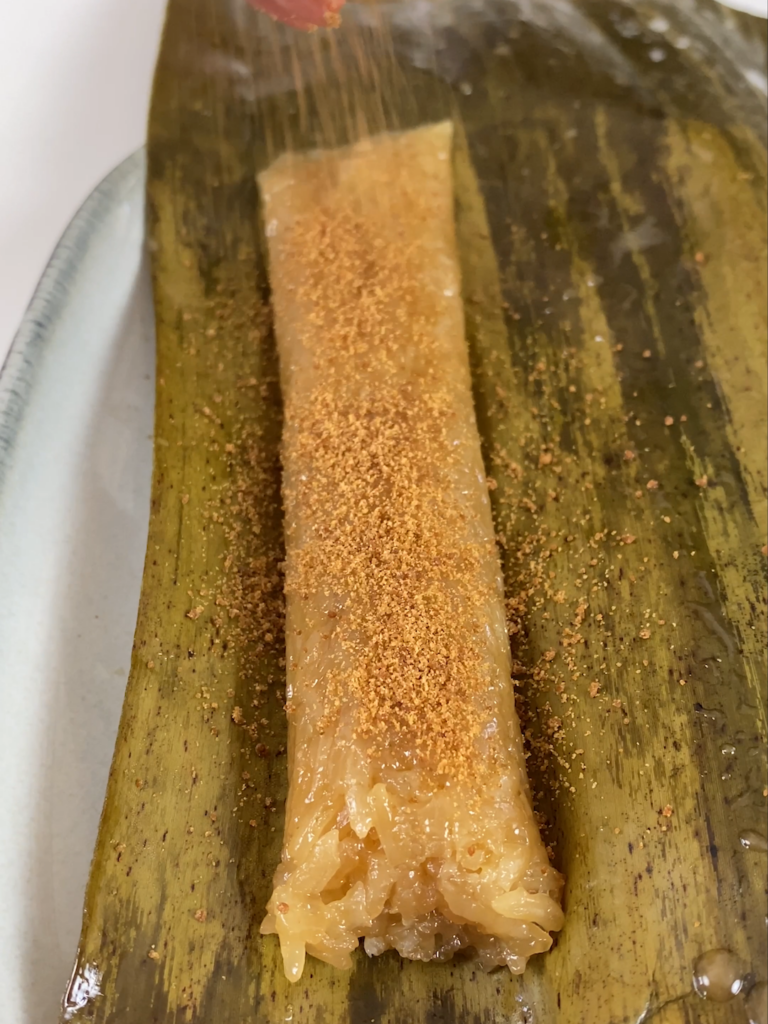
17. Suman
Suman is a beloved Filipino dessert made from sticky rice. You’ll find it wrapped in banana leaves and steamed to perfection.
The main ingredients are glutinous rice and coconut milk. This combination creates a soft, chewy texture that’s hard to resist.
Some versions include a sweet coconut caramel sauce for extra flavor. The sauce adds richness and complements the mild taste of the rice.
You can enjoy suman as a snack or dessert. It pairs well with coffee or tea. Many Filipinos also eat it for breakfast.
This treat is popular during festivals and special occasions. You’ll often see it sold by street vendors or in local markets.
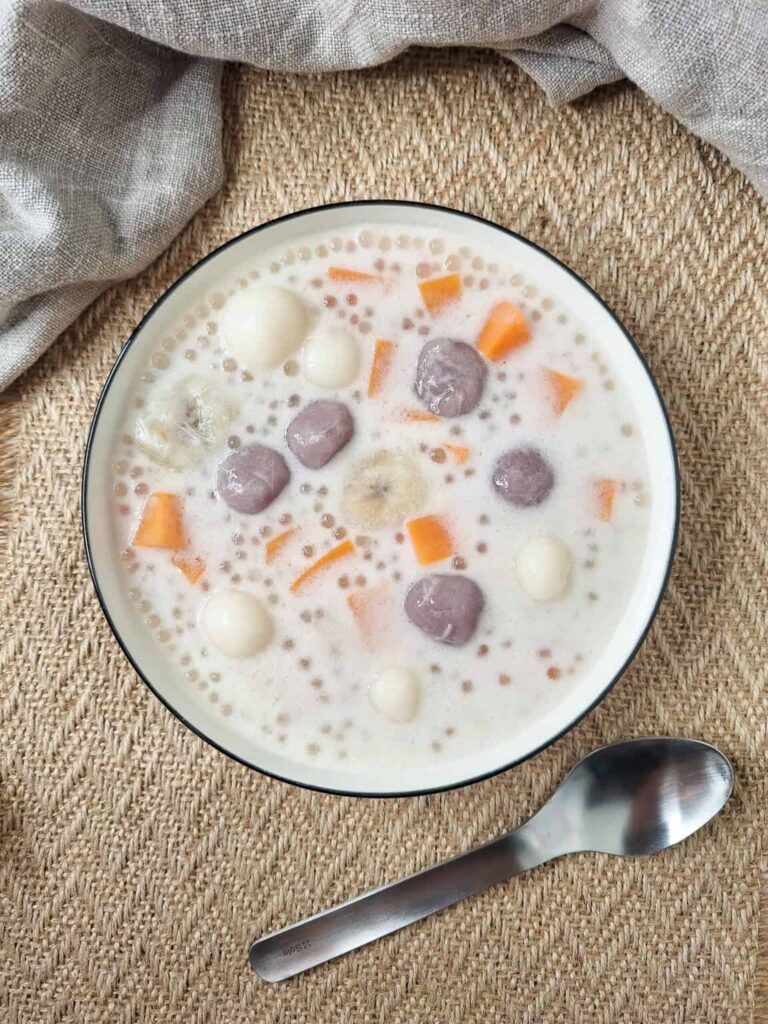
18. Ginataang Bilo-Bilo
Ginataang Bilo-Bilo is a sweet Filipino dessert soup. It features chewy rice balls in a creamy coconut milk base.
To make it, you mix glutinous rice flour with water to form small dough balls. You then cook these in boiling coconut milk with sugar.
Many versions include fruits and root crops. Popular additions are jackfruit, banana, and sweet potato. Some recipes also use tapioca pearls for extra texture.
The result is a warm, comforting treat. The rice balls become soft and gooey, while the coconut milk turns sweet and thick. It’s often enjoyed as a snack or dessert, especially on rainy days.
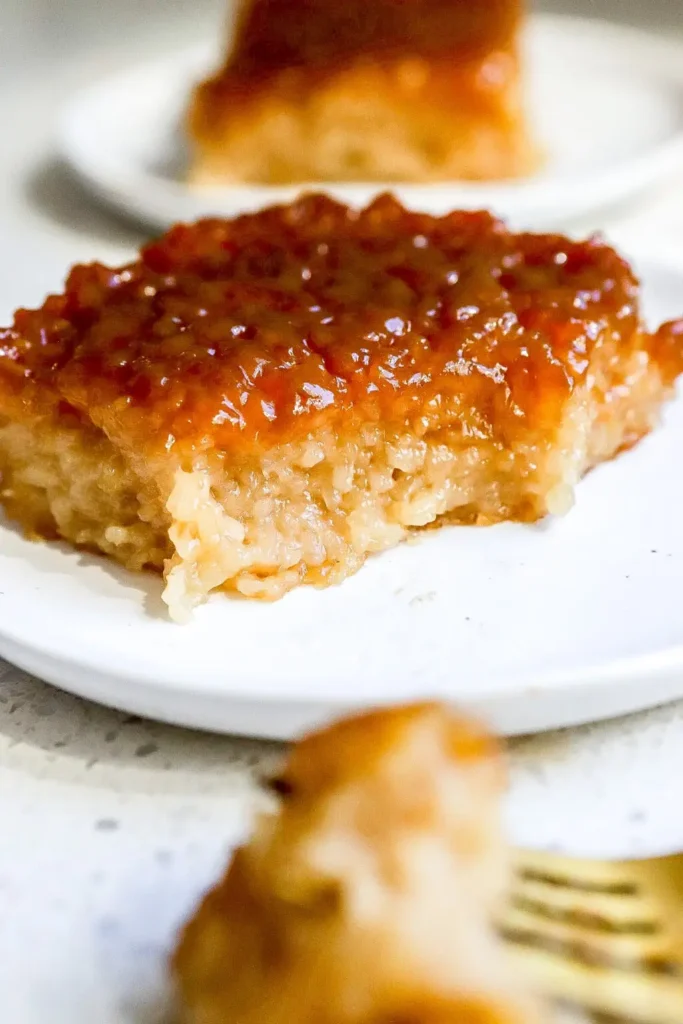
19. Biko
Biko is a beloved Filipino rice cake dessert you’ll want to try. It’s made with sticky rice, coconut milk, and brown sugar. The rice is cooked until soft and chewy, then mixed with the sweet coconut mixture.
Biko has a rich, caramel-like flavor and a dense, sticky texture. It’s often topped with latik, crispy coconut curds that add a nice crunch. Some versions include a layer of caramelized coconut milk on top.
You’ll often find biko at Filipino gatherings and celebrations. It’s a popular snack or dessert that’s both filling and satisfying. Biko is typically served cut into squares or diamond shapes, making it easy to share and enjoy.
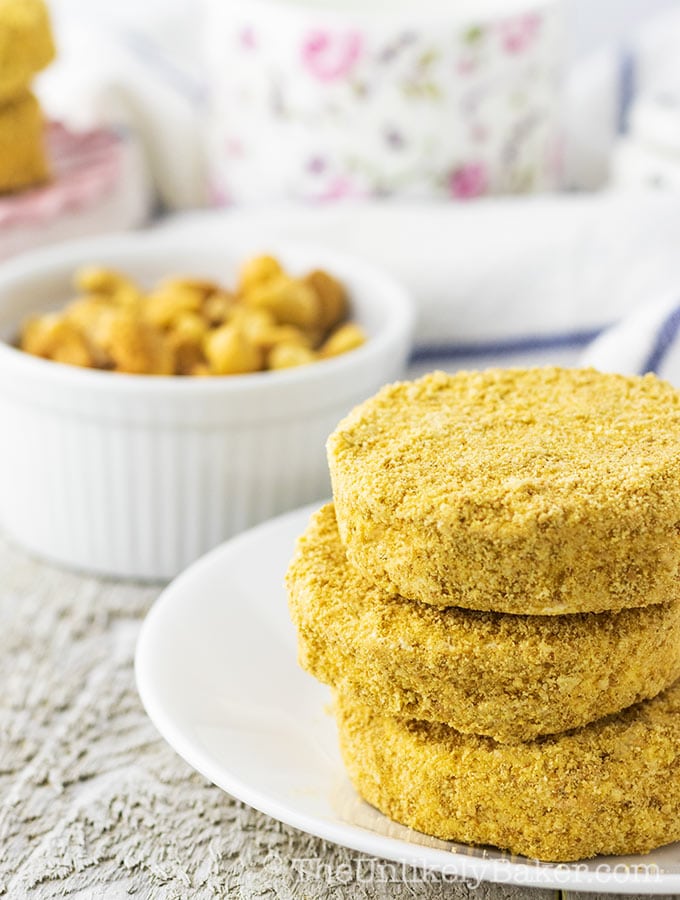
20. Sylvannas
Sylvannas are a sweet Filipino treat you’ll love. These cookies have a light, crispy meringue base made with cashews.
The meringue wafers are sandwiched together with rich buttercream frosting. Then they’re rolled in more crushed cashews for extra nutty flavor.
You’ll find sylvannas served chilled. This makes the buttercream firm and gives the cookies a satisfying texture. Their cool, creamy center contrasts nicely with the crunchy exterior.
Sylvannas come in different shapes. You might see them as circles, ovals, or even squares. They’re often enjoyed with coffee or tea as a special dessert.
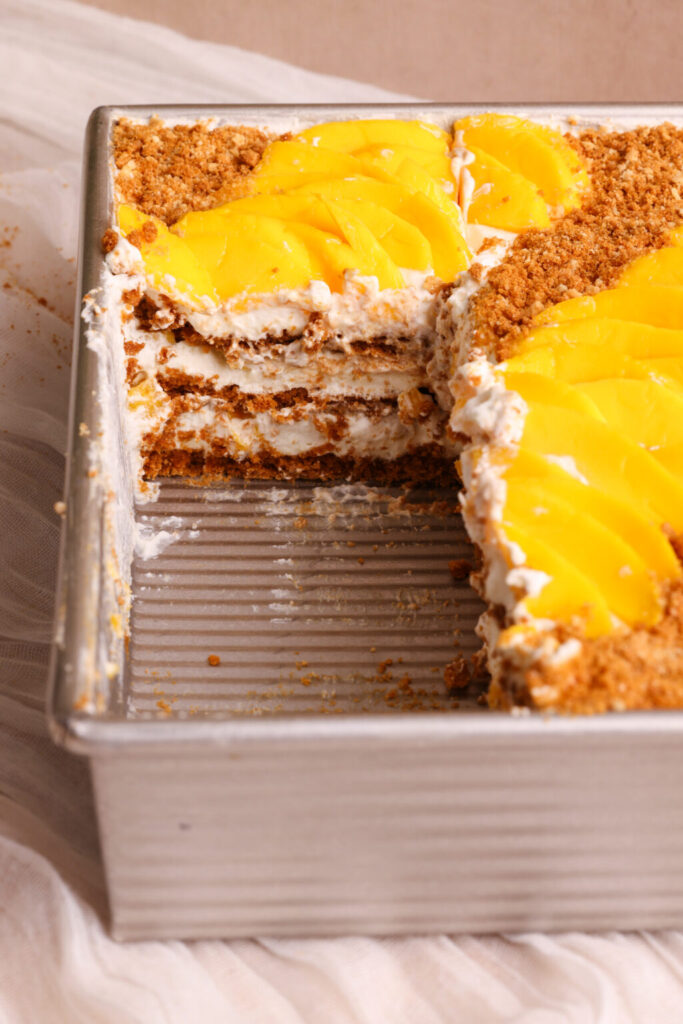
21. Mango Float
Mango float is a beloved no-bake Filipino dessert. It features layers of sweet mangoes, graham crackers, and whipped cream.
To make it, you’ll need ripe mangoes, graham crackers, heavy cream, and condensed milk. Whip the cream until stiff peaks form, then fold in condensed milk.
Layer graham crackers in a dish, then spread whipped cream on top. Add a layer of sliced mangoes. Repeat these layers until you reach the top of your container.
Chill the dessert for a few hours before serving. The crackers will soften, creating a cake-like texture. Mango float is perfect for hot days and special occasions.
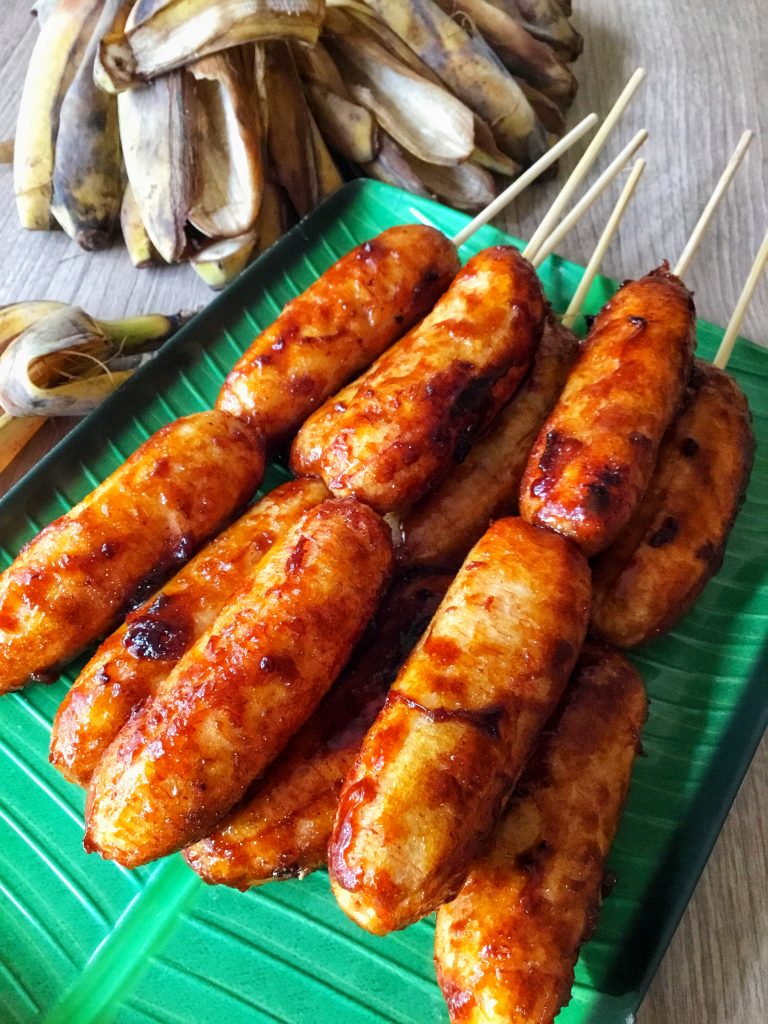
22. Banana Cue
Banana cue is a popular Filipino street food dessert. It’s made with saba bananas coated in caramelized brown sugar.
To make banana cue, you fry whole peeled bananas in hot oil. Then you sprinkle brown sugar over them as they cook. The sugar melts and forms a crunchy caramel coating.
The bananas turn golden brown and develop a sticky-sweet exterior. Inside, they become soft and creamy. Banana cue is often served on bamboo skewers for easy eating on the go.
This treat combines the natural sweetness of bananas with the rich flavor of caramel. It’s a simple but delicious snack enjoyed by many Filipinos.
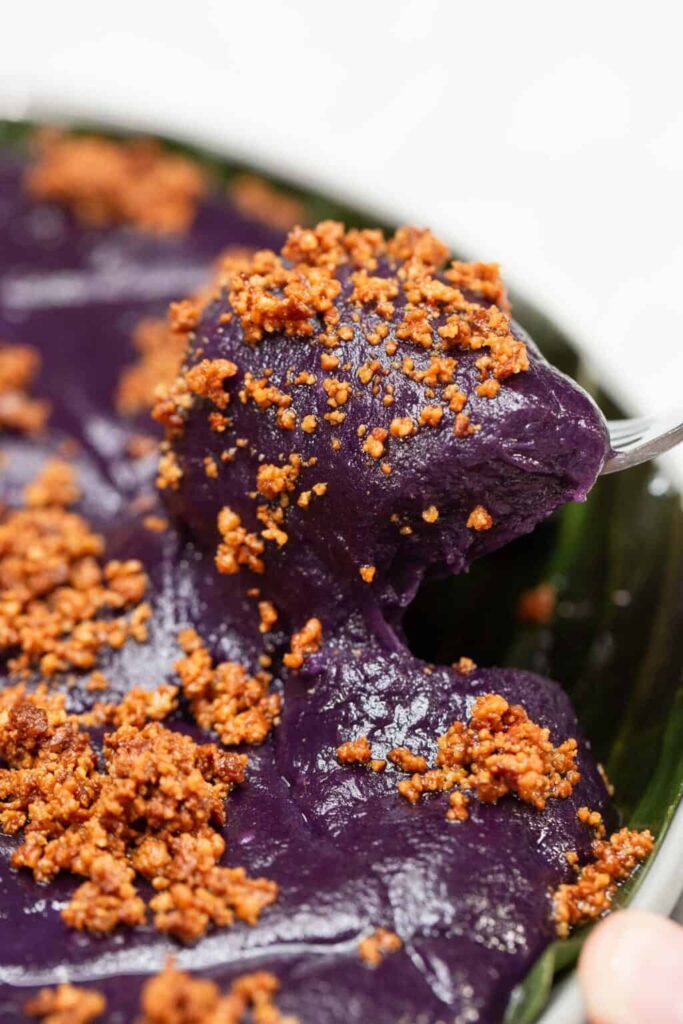
23. Kalamay
Kalamay is a sticky Filipino dessert you’ll love. It’s made from glutinous rice flour, coconut milk, and sugar. The mixture is cooked until thick and gooey.
You can find different varieties of kalamay across the Philippines. Some include gabi (taro) or jackfruit for extra flavor. Others are topped with latik, a coconut curd.
To enjoy kalamay, you might eat it straight from a coconut shell or banana leaf. It’s often served as a snack or dessert. The texture is chewy and the taste is sweet.
Making kalamay at home is simple. You mix the ingredients, cook them, and then steam or bake the mixture. It’s a fun treat to share with family and friends.
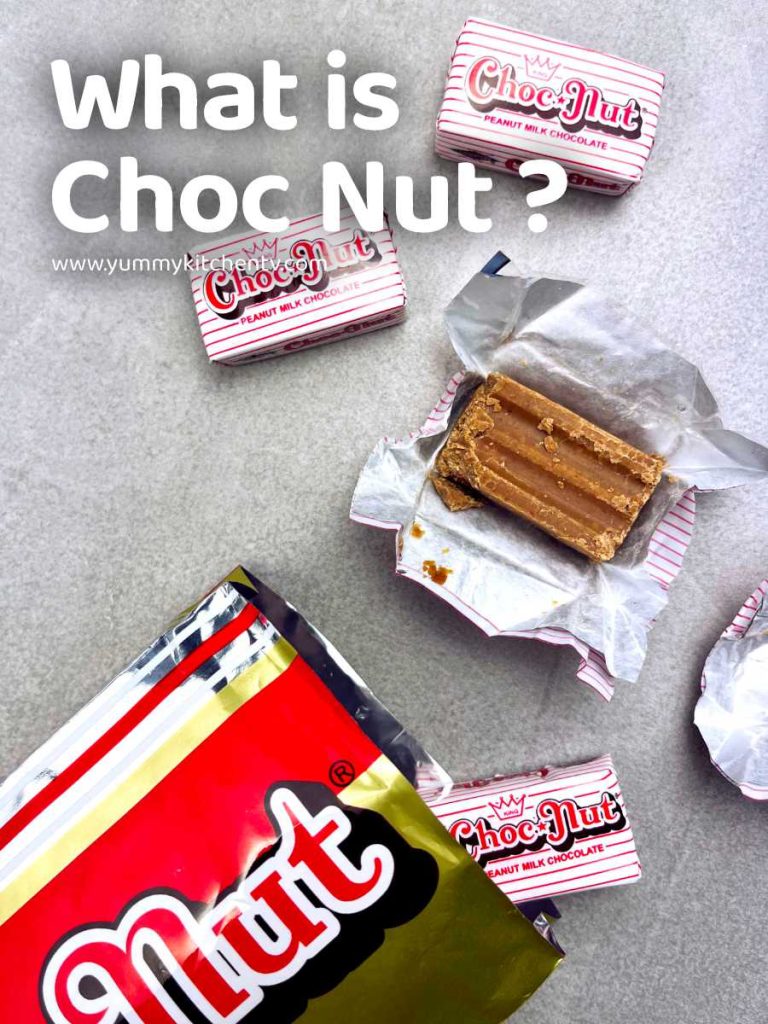
24. Chocnut
Chocnut is a beloved Filipino candy that combines chocolate and peanut flavors. You’ll find these small, rectangular treats wrapped in iconic brown and white paper.
The candy has a crumbly texture that melts in your mouth. It’s made from milk powder, ground peanuts, cocoa, and sugar.
Chocnut is popular as a snack or dessert. You can enjoy it on its own or use it in recipes. Some cafes serve Chocnut-inspired drinks and desserts.
Many Filipinos have fond childhood memories of eating Chocnut. It’s a nostalgic treat that brings back happy times for many people.
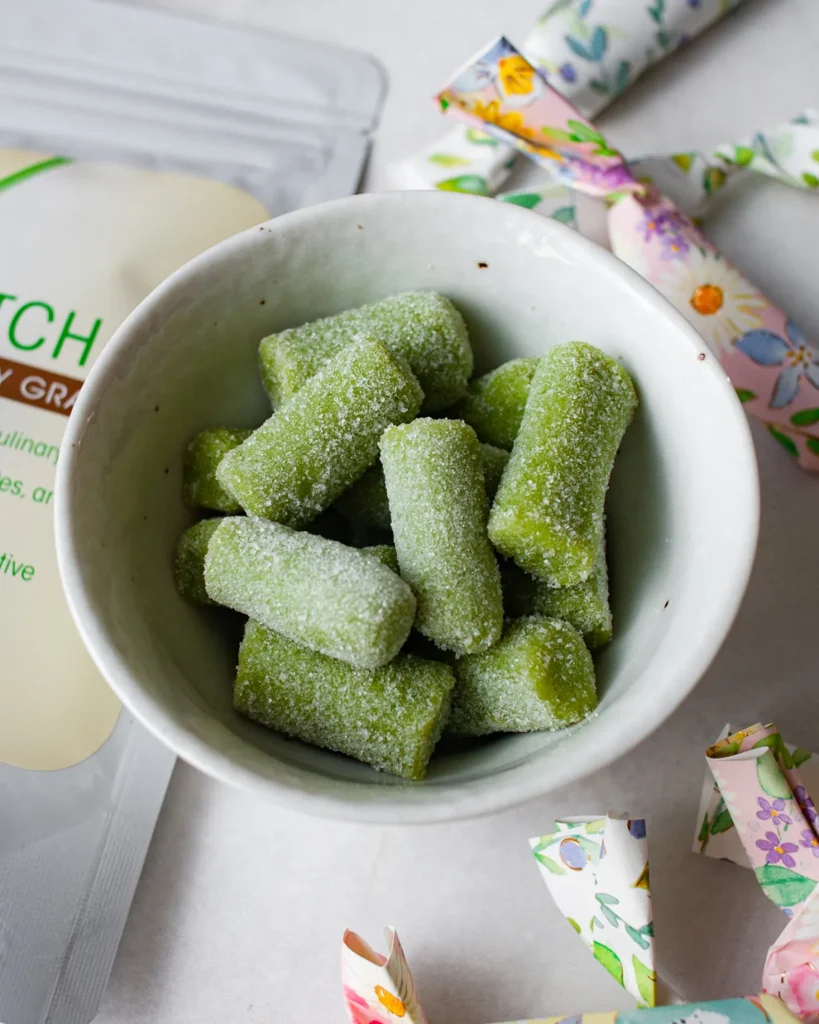
25. Pastillas de Leche
Pastillas de leche are sweet Filipino milk candies. You can make them at home with just a few ingredients.
To create these treats, mix milk, sugar, and lime zest in a pan. Cook the mixture until it thickens into a paste.
Next, add powdered milk to form a dough-like texture. Let it cool, then shape it into small cylinders.
Roll the candies in sugar for extra sweetness. Wrap them in colorful paper or cellophane for a nice presentation.
Pastillas de leche make great desserts or snacks. They’re creamy, sweet, and easy to make. Try them for a taste of Filipino cuisine.
The Cultural Significance of Filipino Desserts
Filipino desserts play an important role in the country’s culture and traditions. They reflect local ingredients, cooking methods, and regional tastes that have developed over centuries.
History and Origins
Filipino desserts have roots in native, Spanish, and Chinese influences. Before colonization, sweets were made from local fruits, coconuts, and rice. The Spanish introduced new ingredients like milk and eggs. This led to creamy desserts like leche flan.
Chinese traders brought their own dessert-making techniques. They introduced rice flour and glutinous rice, which are used in many Filipino sweets today. Over time, these different influences blended to create unique Filipino treats.
Regional Variations
Each region in the Philippines has its own special desserts. In Pampanga, they make a rich purple dessert called sapin-sapin using coconut milk and rice flour. Bicol is known for pinangat na suman, sticky rice cakes wrapped in leaves.
Visayan areas serve binignit, a sweet soup with root crops and fruits. In Mindanao, you’ll find durian candies and pastries. These regional sweets showcase local ingredients and cooking styles. They’re a source of pride for each area.
Key Ingredients in Filipino Desserts
Filipino desserts rely on a mix of local ingredients that give them unique flavors and textures. These key components create sweet treats that are loved across the country.
Coconut and Coconut Milk
Coconut is a star in Filipino sweets. You’ll find shredded coconut in many recipes, adding texture and a nutty taste. Coconut milk plays a big role too. It makes desserts creamy and rich.
Biko, a sticky rice cake, uses coconut milk for flavor. Bibingka, a coconut cake, gets its sweetness from coconut milk too. Even ice cream-based desserts often have coconut as a topping.
Rice and Glutinous Rice
Rice is not just for main dishes in Filipino cuisine. It’s a key dessert ingredient too. Regular rice and sticky rice are both used to make sweets.
Puto is a popular rice cake made from regular rice flour. It’s steamed and comes in many flavors. Suman uses glutinous rice. It’s wrapped in banana leaves and steamed.
These rice-based desserts are often eaten for breakfast or as snacks. They can be sweet or savory, showing how versatile rice is in Filipino cooking.
Tropical Fruits
The Philippines is known for its tropical fruits, and these often show up in desserts. Mangoes, bananas, and jackfruit are common choices.
You’ll find mango in many desserts, from ice cream to cakes. Bananas are used in treats like banana cue, which is fried and coated in sugar.
Halo-halo, a popular icy dessert, often includes a mix of fruits. You might find jackfruit, mango, and banana all in one glass. These fruits add natural sweetness and bright flavors to Filipino sweets.
Techniques and Methods Used in Filipino Dessert Making
Filipino dessert making combines traditional cooking methods with modern twists. Cooks use local ingredients and time-honored techniques to create sweet treats.
Traditional Cooking Techniques
Many Filipino desserts rely on steaming. Cooks use bamboo or metal steamers to make soft, fluffy treats like puto and kutsinta. Steaming keeps the texture light and moist.
Boiling is another common method. Cooks make sticky rice desserts like biko and suman by boiling rice with coconut milk and sugar. This creates a chewy, sweet texture.
Frying is popular for making crispy sweets. You’ll find fried banana treats like turon and maruya. The hot oil gives a crunchy outside and soft inside.
Modern Twists on Classic Recipes
Today’s Filipino cooks often add new flavors to old favorites. You might find ube (purple yam) in traditional rice cakes or leche flan.
Bakers use ovens more now. This allows for cakes and pastries inspired by Western desserts but with Filipino flavors.
Some cooks use less sugar or healthier ingredients. They might swap white sugar for coconut sugar or use whole grain flour.
New tools like blenders and food processors make it easier to create smooth textures. This helps in making ice creams and mousses with local fruits.